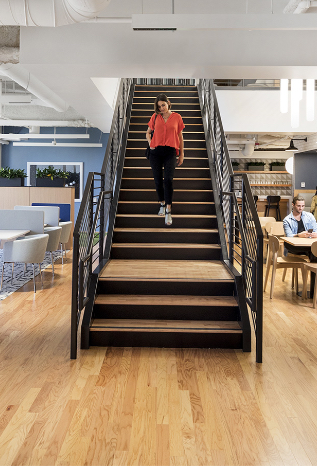More people than ever before are returning to the office – the global average currently stands at around 3.5 days a week in the office, and this is likely to increase.
Fortunately for businesses looking to be in the office more often, workforce sentiment is slowly changing as teams see the benefits of more time spent together. Although people are still reluctant to give up remote work completely, 68% of employees are expecting a transition to four days in the office at some point in the future.
What is a phased return to work?
A phased return to work is a way of easing employees back into regular office life. It starts with just a day or two in the office per week, and gradually ramps up. Globally, around 53% of employers think that by 2025, we’ll likely be back to four days in the office a week.
But with many favouring the WFH lifestyle, how can you get teams back in the same room without losing them in the process?

How can businesses entice their staff back into the office?
With hybrid and remote working having the hefty benefit of home comforts, businesses need to think of unique ways of incentivising workplace attendance.
Most businesses will be able to achieve this by offering an array of genuine, meaningful amenities. The amenities that many have come to expect are rooted in their experience of home comforts — free barista-made coffee, plush outdoor spaces and rooftops, complimentary snacks and refreshments, air conditioning, and top-tier fit-outs.
But with organisations still working on their return-to-work policies, it’s both unrealistic and unsustainable for many businesses to allocate budget to upkeep such offerings. This is where coworking and flexible office spaces can come to the rescue.
Often just a fraction of the price of traditional office space, coworking and flexible office spaces provide companies with all the amenities their staff expect without paying for the luxury.
With flexible and shared office spaces, employees also get the luxury of coming to work in a hub rather than a bog-standard office. This means they can be a part of an inspiring environment where networking with professionals outside their organisation is encouraged. It means more opportunities for social interaction as well as idea-sharing and collaboration.
Phased return to work: pass or fail?
Overall, the idea of a phased return to work is an approach that is doomed to fail for most businesses — 42% of businesses who implement the strategy report higher than normal staff attrition. The best way to get people back in the office is—quite simply—to create an office environment that they want to come back to every day.

